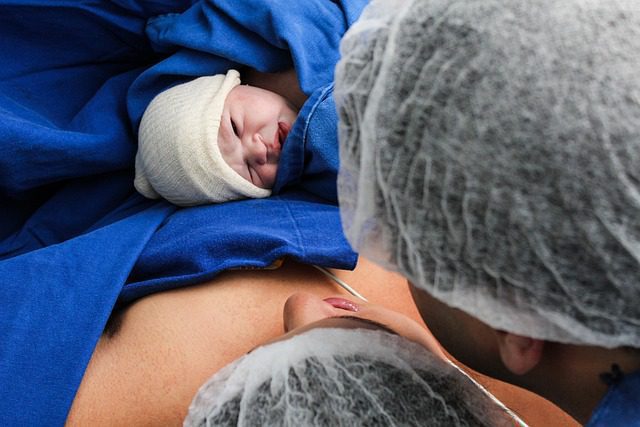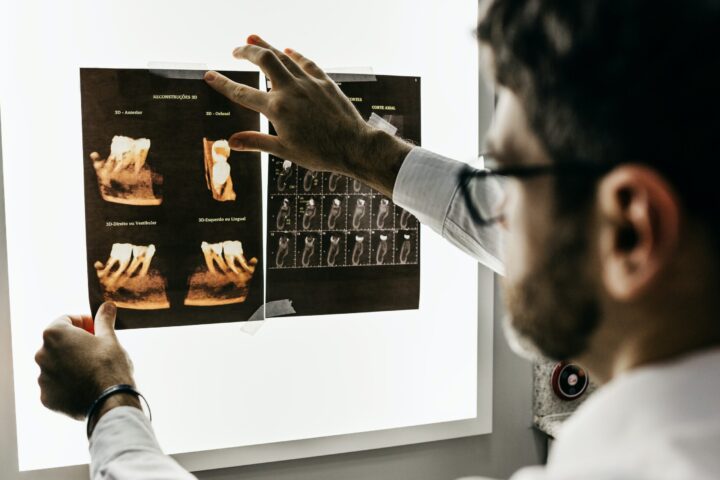Medical imaging is a cornerstone of modern healthcare. From X-rays to MRIs, these imaging technologies allow doctors to see inside the body without surgery. However, interpreting these images is often challenging and time-consuming.
This is where Artificial Intelligence (AI) comes into play. AI-powered diagnostic tools are transforming medical imaging by making it faster, more accurate, and more accessible. This article will explore how AI is revolutionizing medical imaging, discussing the technology, its benefits, the challenges, and what the future holds.
Understanding AI in Medical Imaging
AI in medical imaging refers to the use of advanced algorithms and machine learning techniques to analyze medical images. These AI systems are designed to assist radiologists and other healthcare professionals in interpreting complex images, identifying abnormalities, and making diagnostic decisions. AI works by processing vast amounts of data.
In medical imaging, this data consists of thousands or even millions of images from different patients. AI systems learn to recognize patterns in these images, such as the difference between healthy and diseased tissue. Over time, as the AI system is exposed to more data, it becomes increasingly accurate in its analysis. The most common AI techniques used in medical imaging include deep learning and convolutional neural networks (CNNs).
Deep learning involves training AI models on large datasets, allowing them to make predictions and decisions based on the data. CNNs are a type of deep learning model specifically designed for image recognition tasks. They are particularly effective in analyzing medical images, where they can detect subtle patterns that the human eye might miss.


The Impact of AI on Different Imaging Modalities
AI is being integrated into various imaging modalities, each with its unique benefits and applications. Let’s take a closer look at how AI is enhancing different types of medical imaging.
1. X-rays
X-rays are one of the most widely used imaging modalities. They are often the first line of investigation for a wide range of conditions, including fractures, infections, and lung diseases. However, interpreting X-rays can be challenging, especially when dealing with subtle abnormalities.
AI-powered diagnostic tools are helping to improve the accuracy and speed of X-ray interpretation. For example, AI can be used to detect signs of pneumonia, tuberculosis, and even COVID-19 in chest X-rays. These AI systems can highlight areas of concern on the X-ray, allowing radiologists to focus on those regions and make quicker diagnoses.
In addition to detecting specific conditions, AI can also be used to prioritize cases. For example, if an AI system detects a potentially life-threatening condition in an X-ray, it can alert the radiologist to review that case first. This can help to ensure that patients with serious conditions receive prompt attention.
2. Computed Tomography (CT) Scans
CT scans provide detailed cross-sectional images of the body and are used to diagnose a wide range of conditions, including cancers, cardiovascular diseases, and neurological disorders. However, the interpretation of CT scans can be complex due to the sheer volume of images generated.
AI is making it easier to analyze CT scans by automating the detection of abnormalities. For example, AI algorithms can be trained to detect lung nodules, which are small growths in the lungs that could indicate cancer. AI can also measure the size and growth of these nodules over time, helping doctors determine whether they are benign or malignant.
In emergencies, such as when a patient has suffered a stroke or trauma, time is of the essence. AI-powered diagnostic tools can quickly analyze CT scans to detect bleeding in the brain, fractures, or other critical conditions. This rapid analysis can help to speed up treatment and improve patient outcomes.
3. Magnetic Resonance Imaging (MRI)
MRI is a powerful imaging modality that provides detailed images of soft tissues, such as the brain, muscles, and organs. It is particularly useful for diagnosing neurological conditions, musculoskeletal disorders, and cancers. However, MRI scans are complex and can be difficult to interpret, requiring specialized expertise.
AI is enhancing MRI interpretation by automating the analysis of complex images. For example, AI can be used to detect early signs of Alzheimer’s disease by analyzing changes in brain structure. AI can also identify tumors, measure their size, and track their growth over time.
Another exciting application of AI in MRI is the development of fast MRI techniques. Traditional MRI scans can take a long time, sometimes up to an hour, which can be uncomfortable for patients. AI is being used to accelerate the scanning process, reducing the time it takes to acquire high-quality images. This not only improves patient comfort but also increases the efficiency of MRI departments.
4. Ultrasound
Ultrasound is a versatile imaging modality used in various medical fields, including obstetrics, cardiology, and emergency medicine. It is non-invasive, portable, and relatively inexpensive, making it accessible to a wide range of patients. However, interpreting ultrasound images can be challenging due to the quality of the images and the operator’s skill level.
AI is helping to standardize and improve the interpretation of ultrasound images. For example, AI can assist in identifying fetal anomalies during pregnancy, detect heart conditions, and assess liver health. AI-powered ultrasound systems can also guide the operator during the scan, suggesting the best angles and positions to obtain optimal images.
In remote or underserved areas where access to trained ultrasound technicians may be limited, AI-powered portable ultrasound devices are making a significant impact. These devices use AI to automatically interpret the images and provide immediate feedback to the healthcare provider, ensuring that patients receive accurate diagnoses even in challenging environments.
5. Mammography
Mammography is the primary imaging modality used for breast cancer screening. Early detection of breast cancer through mammography can significantly improve survival rates. However, interpreting mammograms can be challenging, especially when the abnormalities are small or subtle.
AI is revolutionizing mammography by improving the accuracy and consistency of breast cancer detection. AI algorithms can analyze mammograms to detect microcalcifications, masses, and architectural distortions that may indicate the presence of cancer. These tools can also assess breast density, which is an important risk factor for breast cancer.
In addition to detecting cancer, AI can help to reduce the number of false positives in mammography. False positives occur when a mammogram suggests the presence of cancer when there is none, leading to unnecessary biopsies and anxiety for the patient. AI can reduce false positives by providing a second opinion that confirms or refines the radiologist’s initial assessment.


The Benefits of AI-Powered Diagnostic Tools in Medical Imaging
The integration of AI into medical imaging offers numerous benefits that have the potential to revolutionize healthcare. Here are some of the key advantages:
1. Improved Accuracy
One of the most significant benefits of AI-powered diagnostic tools is the improvement in accuracy. AI can analyze medical images with a level of precision that surpasses human capabilities. By detecting subtle patterns and abnormalities that may be missed by the human eye, AI can help reduce diagnostic errors and improve patient outcomes.
For example, a study published in the journal Nature found that an AI system outperformed radiologists in detecting breast cancer in mammograms. The AI system was able to identify cancers that were missed by human experts, highlighting the potential of AI to improve diagnostic accuracy.
2. Faster Diagnosis
Time is a critical factor in many medical conditions. The faster a diagnosis can be made, the sooner treatment can begin. AI-powered diagnostic tools can significantly speed up the process of interpreting medical images, allowing for quicker diagnoses.
In emergencies, such as when a patient has suffered a stroke or heart attack, AI can rapidly analyze imaging data and identify the problem. This can lead to faster interventions, which are crucial for improving patient outcomes in life-threatening situations.
3. Increased Efficiency
AI can also increase the efficiency of medical imaging departments. By automating the analysis of images, AI can reduce the workload of radiologists, allowing them to focus on more complex cases. This can lead to shorter waiting times for patients and more streamlined healthcare services.
In addition, AI-powered tools can prioritize cases based on urgency. For example, if an AI system detects a potentially serious condition in an image, it can alert the radiologist to review that case first. This ensures that patients with critical conditions receive prompt attention, improving the overall efficiency of the healthcare system.
4. Standardization of Care
One of the challenges in medical imaging is the variability in interpretation between different radiologists. AI has the potential to standardize the interpretation of medical images, reducing variability and ensuring that all patients receive consistent care.
For example, AI can provide radiologists with a second opinion that is based on the analysis of thousands or even millions of images. This can help to confirm or refine the radiologist’s initial assessment, leading to more accurate and consistent diagnoses.
5. Access to Expertise
In some parts of the world, access to trained radiologists and advanced imaging technology is limited. AI-powered diagnostic tools can help to bridge this gap by providing expertise where it is needed most.
For example, portable AI-powered ultrasound devices can be used in remote or underserved areas to provide immediate diagnostic information. These devices can analyze the images and provide feedback to healthcare providers, ensuring that patients receive accurate diagnoses even in challenging environments.
6. Personalized Medicine
AI-powered diagnostic tools also have the potential to contribute to the development of personalized medicine. By analyzing a patient’s medical images in conjunction with other data, such as genetic information and medical history, AI can help tailor treatment plans to the individual.
For example, AI can be used to predict how a tumor will respond to different treatments based on its characteristics. This allows for more personalized and effective treatment plans, improving patient outcomes.


Challenges and Considerations
While the benefits of AI-powered diagnostic tools are significant, some challenges must be addressed to ensure their successful integration into healthcare.
1. Data Quality and Quantity
AI systems rely on large amounts of high-quality data to function effectively. In medical imaging, this means having access to diverse datasets that represent a wide range of conditions and patient populations. However, obtaining and curating these datasets can be challenging, particularly when dealing with rare conditions or underserved populations.
In addition, the quality of the data used to train AI systems is critical. If the data is incomplete, biased, or of poor quality, the AI system may produce inaccurate or unreliable results. Ensuring that AI systems are trained on high-quality, representative data is essential for their success in medical imaging.
2. Regulation and Oversight
The use of AI in medical imaging is still relatively new, and regulatory frameworks are still being developed. Ensuring that AI-powered diagnostic tools are safe, effective, and reliable requires clear guidelines and standards.
Regulatory bodies, such as the U.S. Food and Drug Administration (FDA), are beginning to develop frameworks for the approval and oversight of AI-powered medical devices. However, there is still much work to be done to ensure that these tools are used safely and ethically in clinical practice.
3. Ethical Considerations
The integration of AI into medical imaging raises important ethical considerations. For example, there is the potential for bias in AI systems, particularly if the data used to train the AI is not representative of diverse patient populations. This could lead to disparities in care and outcomes for different groups of patients.
In addition, the use of AI in medical imaging raises questions about transparency and accountability. Patients and healthcare providers need to trust the AI system’s decisions, and this requires transparency in how the AI system operates and makes decisions.
4. Integration with Existing Systems
Integrating AI-powered diagnostic tools into existing healthcare systems can be complex and costly. Healthcare providers need to invest in the necessary infrastructure, including advanced imaging technology and data storage solutions, to support AI.
In addition, healthcare professionals need to be trained in how to use AI-powered tools effectively. This includes understanding the limitations of AI and how to interpret the results provided by the AI system.
5. Patient Acceptance
Finally, patient acceptance of AI-powered diagnostic tools is a critical consideration. Patients need to trust that the AI system will provide accurate and reliable diagnoses. This requires clear communication from healthcare providers about how the AI system works and what its role is in the diagnostic process.


The Future of AI in Medical Imaging
The future of AI in medical imaging is promising, with many exciting developments on the horizon. Here are some of the trends and innovations that we can expect to see in the coming years:
1. AI-Driven Imaging Platforms
One of the most exciting developments is the emergence of AI-driven imaging platforms. These platforms integrate AI with advanced imaging technology to provide real-time analysis and decision support. For example, AI-driven MRI machines could automatically analyze images as they are acquired, providing immediate feedback to the radiologist.
These platforms could also integrate data from multiple imaging modalities, such as CT, MRI, and ultrasound, to provide a comprehensive analysis of a patient’s condition. This could lead to more accurate diagnoses and personalized treatment plans.
2. Enhanced Imaging Techniques
AI is also driving the development of new and enhanced imaging techniques. For example, AI is being used to develop fast MRI techniques that reduce scan times while maintaining image quality. This could make MRI more accessible to patients and reduce the burden on imaging departments.
In addition, AI is being used to develop novel imaging modalities that provide new insights into the human body. For example, AI-powered optical imaging techniques could provide detailed images of tissues at the cellular level, opening up new possibilities for early disease detection.
3. AI-Powered Image Reconstruction
AI is also being used to improve the quality of medical images through image reconstruction techniques. For example, AI can be used to enhance the resolution of images, reduce noise, and correct artifacts. This can lead to clearer and more accurate images, making it easier for radiologists to detect abnormalities.
AI-powered image reconstruction could also reduce the need for repeat scans, which can be costly and expose patients to additional radiation. This could lead to more efficient and cost-effective healthcare.
4. AI in Preventive Healthcare
AI is also expected to play a larger role in preventive healthcare. By analyzing a person’s medical images in conjunction with other health data, AI can identify risk factors for diseases before they develop. This could lead to earlier interventions and more personalized prevention strategies.
For example, AI could analyze a person’s lung images to assess their risk of developing lung cancer based on their smoking history and other factors. This could lead to earlier screening and interventions, potentially preventing the development of cancer.
5. Global Access to Advanced Imaging
Finally, AI has the potential to democratize access to advanced medical imaging. Portable AI-powered imaging devices could be used in remote or underserved areas to provide high-quality diagnostic information. This could help to bridge the gap in healthcare access and ensure that patients receive timely and accurate diagnoses, regardless of their location.
In conclusion, AI-powered diagnostic tools are revolutionizing medical imaging, offering numerous benefits that have the potential to transform healthcare. By improving the accuracy, speed, and accessibility of medical imaging, AI is helping to ensure that patients receive timely and accurate diagnoses.
However, the integration of AI into medical imaging also comes with challenges. Ensuring data quality, addressing ethical considerations, and integrating AI with existing systems are all critical to the successful implementation of AI-powered diagnostic tools.
As AI technology continues to advance, we can expect to see even more exciting developments in medical imaging. The future of healthcare is likely to be increasingly AI-driven, offering new opportunities for early diagnosis, personalized medicine, and global access to advanced imaging. With continued research, collaboration, and ethical considerations, AI has the potential to revolutionize medical imaging and improve the lives of millions of people around the world.



































Leave a Review